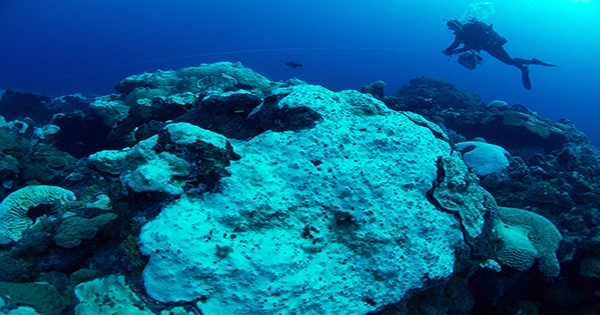TARYN FOSTER HAS A BELIEF If Australia can expedite efforts to save them, she may yet be able to save her fading coral reefs. For years, biologists like her have helped reefs that are struggling with changing climates and ocean acidity: they’ve collected coral fragments, divided them into pieces so they can grow in nurseries on land, crossbred species to increase heat resistance, and experimented with probiotics to protect against deadly diseases.
Yet, Foster asserts that even thousands of these improved and healthy corals transplanted onto harmed reefs would not be sufficient to save entire ecosystems. “We require a method for mass coral deployment.” Like a task for certain robots.
Individual corals, known as polyps, construct their skeleton by drawing calcium carbonate from seawater in a healthy environment. In order to create enormous colonies, or coral reefs, they mate with corals that share their genetic composition. Nevertheless, as the ocean takes in more carbon dioxide from the atmosphere, the water’s acidity rises, making it challenging for the polyps to construct their skeletons or keep them from dissolving. Corals are struggling to survive as a result of rising ocean temperatures and acidification, which prevents reef growth.

For example, coral development in the Great Barrier Reef has slowed recently, in part because corals bleach during heat waves as they eject the small algae that dwell inside their tissues and supply them with nourishment. The loss of coral reefs has a disastrous effect on the multitudes of fish, crabs, and other marine species that depend on them for shelter and food. Bleached corals are not dead but are more at risk of starvation and disease.
It takes a lot of time, money, and labor to hand graft replacement corals onto existing reefs from a nursery. Corals grow slowly by nature; depending on the species, it can take them three to ten years to develop an adult-sized skeleton. Foster aims to hasten this process with Coral Maker, her business. Prior to focusing on climate change and coral reefs, Foster worked in her family’s masonry company. She is currently creating limestone shapes that resemble the natural coral skeletons using the family’s dry-casting machinery in order to provide newborn corals a solid foundation from which they can grow more quickly.
The initial version of the Coral Maker skeleton contains six plugs that can be filled with live coral fragments and is dome-shaped. The skeleton’s design is influenced by nature: While branching or plate corals grow outward from a solid base, many species, such as brain corals, grow in a dome form. Yet, Foster notes that dome-shaped skeletons have their own set of problems. They are harder to make than anything with a flat surface, harder to transport on a pallet, harder to attach things on with glue. Foster keeps modifying the design in an effort to eventually enable the masonry gear to make up to 10,000 pieces each day for just a few dollars. Following it, other factories might use the same procedure.
When many coral fragments with their pre-built skeletons are spread out across reefs, it may take them 12 to 18 months for them to grow to their maximum size. If the location, water, and light conditions are appropriate, that is a lot faster than they would require without assistance. Corals want temperatures that are warm but not too warm, bright but not too bright, and water currents that carry food without damaging their delicate structures. They’re a little finicky, adds Foster.
Foster, who lives in Western Australia close to Abrolhos Island, has been growing a first batch of corals in prefabricated skeletons for more than a year. The initial attempt was designed to see how well coral would do in an ideal environment and how readily divers could transfer the limestone skeletons. Foster and her coworkers placed a second batch of corals on a sandy area of the underwater farm on December 2, 2022. This time, the prefabricated skeletons included a little grip for a human diver or a remote-controlled vehicle, and they were in the form of a disc.
Foster estimates that in order to create about 1.7 million corals on 280,000 skeletons annually, the human operations performed on land will need to be mechanized. This is true even while the corals joyfully enclose their bones. She is collaborating with scientists at the Autodesk AI Lab in San Francisco to create and train two different kinds of robotic arms equipped with image sensors: one that can slice coral fragments into smaller pieces and glue them into plugs, and another that can insert those plugs into limestone skeletons. She claims that once these are operational, the objective is to have several projects on reefs and coastlines all over the world. Foster says, “I view this as a scaling or delivery method for various other technologies that people are developing, like coral propagation.” “Simply much more quickly and on a larger scale.”














